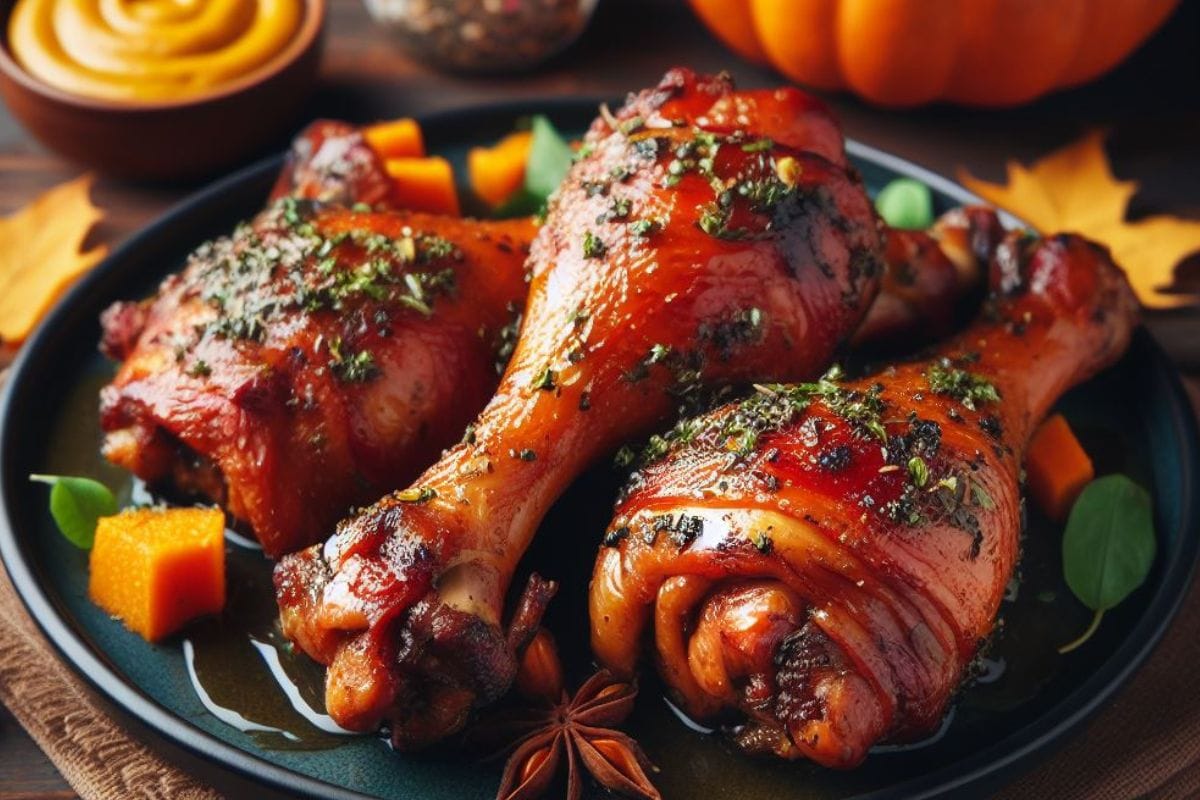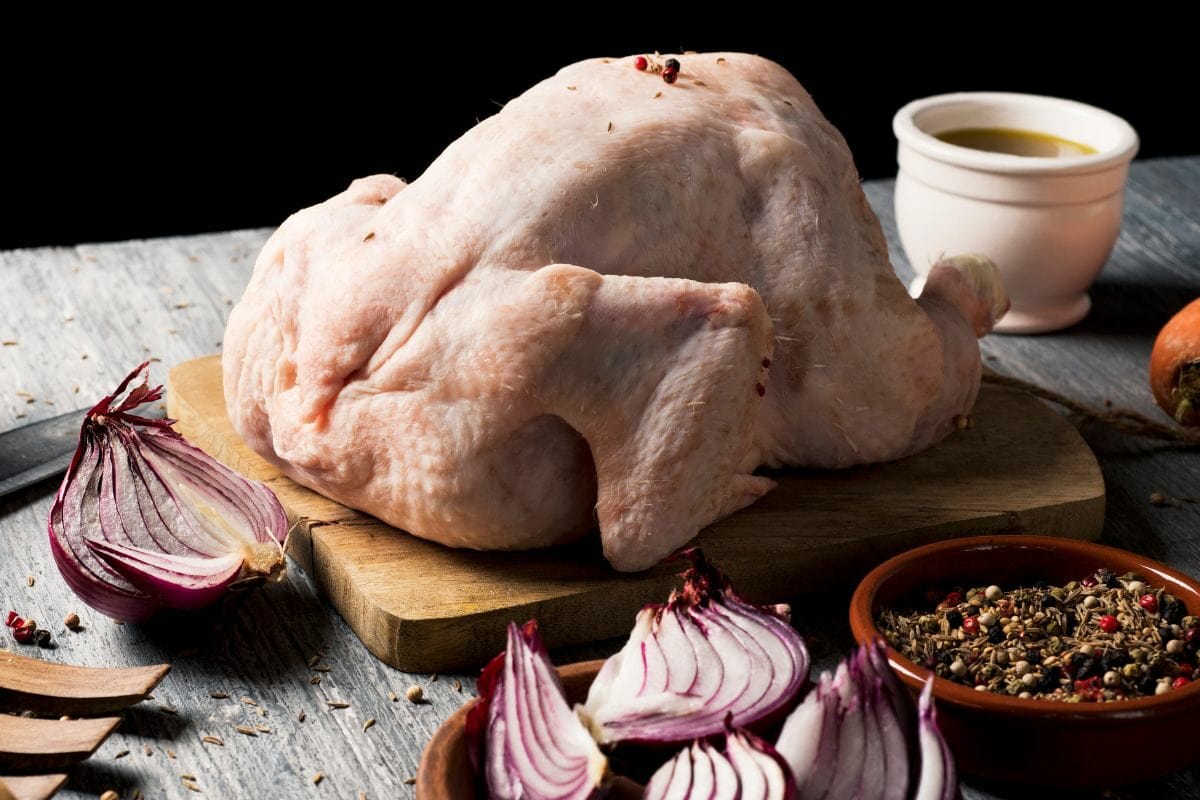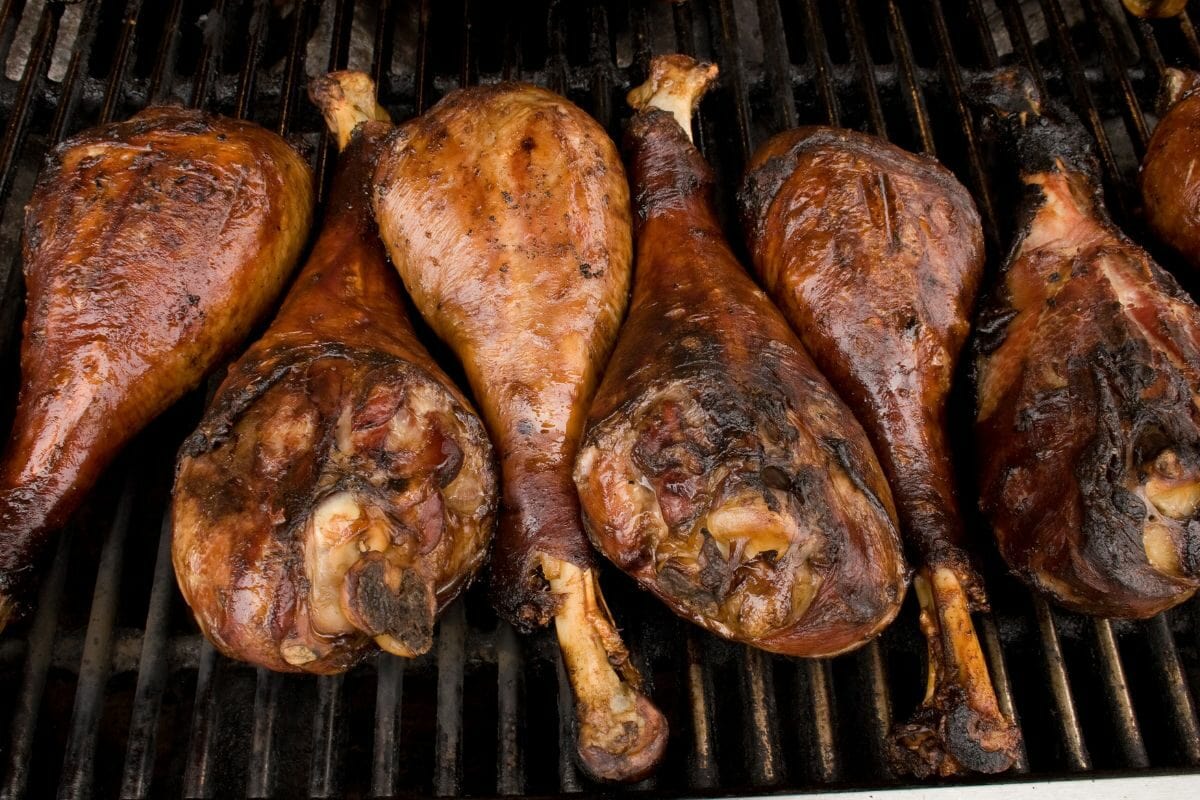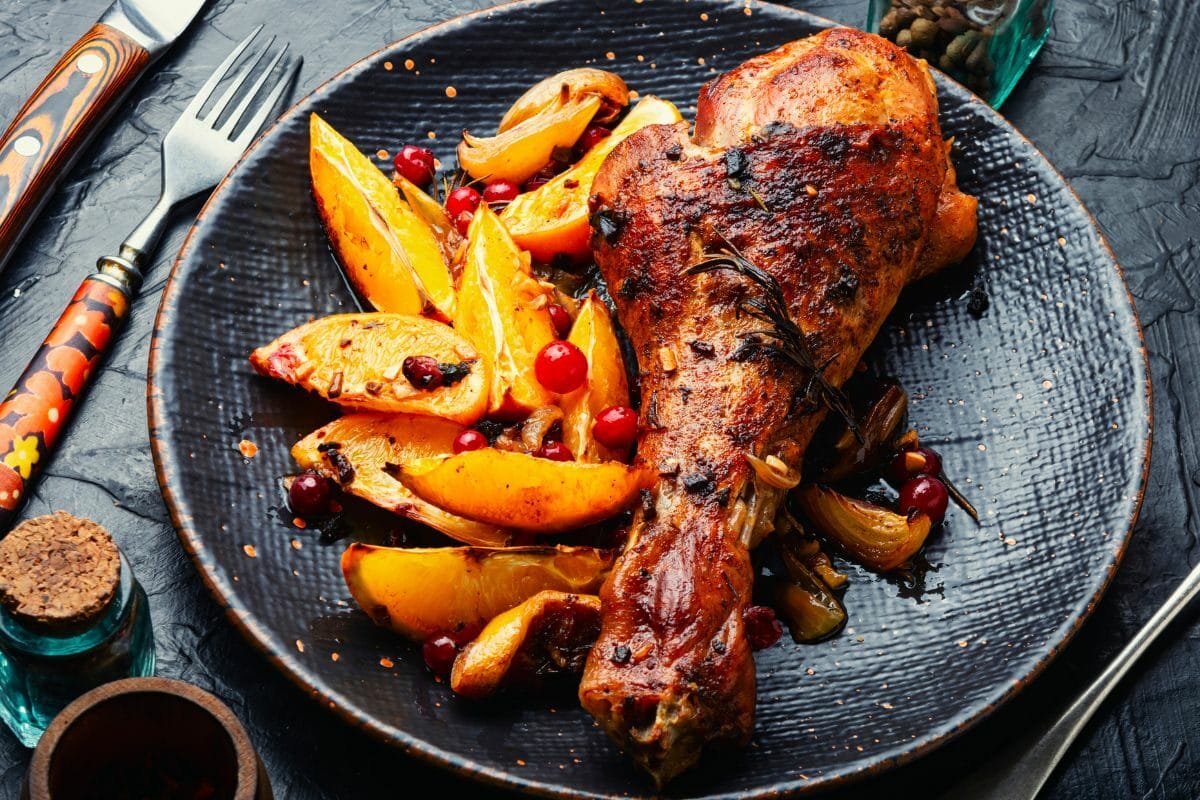Hey there, pilgrim! The key to incredible turkey legs is placing them in a wet brine for 6 hours or overnight, then smoking them for around 2 1/2 to 3 hours until the internal temperature hits 175 degrees F (or higher).
I’ll never forget visiting Disneyland as a kid and eating the Disney smoked turkey legs. The massive theme park turkey legs inspired me, and as an adult, I’ve tried to recreate the magic in my own backyard. Using all my BBQ knowledge and every trick up my sleeve, I tinkered. Eventually, I came up with an amazing smoked turkey legs recipe that is better than any theme park.
Ready to smoke turkey legs that put that sad, dry, chalky Thanksgiving bird to shame? I’m dropping all the best tips and tricks for smoked turkey legs that are insanely juicy, incredibly tender and kissed with smoke.

Turkey drumsticks infused with a smoky flavor are a show-stopper. If you’ve got guests coming over for the holiday season, make this recipe, and they might never leave! Here’s a Thanksgiving host hack: the key to getting your friends and family out the door is to put on a Lions football game. (I say that as a Lions fan!)
Don’t let the wet brine intimidate you. The fridge, spices, and time do all the hard work, infusing the meat with juicy goodness. Trust me. These legs are easier to cook than a whole turkey. They’re faster than making a whole turkey, too.
Psst. C’mere. Can I trust you with a secret? The dark meat of a turkey leg puts white meat like turkey breast to shame. Dark meat is juicier. It’s more tender meat. These giant turkey legs even have a built-in handle! Smoke turkey drumsticks just once for Thanksgiving, and I promise you’ll start making them all year round. Grab some napkins and a wet nap or two. Let’s get to cooking!
Serves: 8
Preparation time: 15 minutes
Cooking time: 2.5 to 3 hours
Recommended wood chips or wood chunks: Hickory, oak, pecan, applewood, or cherry wood. I prefer wood chunks to wood chips. I think the wood chunks burn longer and produce superior smoke.

Note: If you don’t want to make your own seasoning mixture for the simple brine, more power to you! Instead, use 1/4 cup of your favorite BBQ rub to brine. I like the red Hardcore Carnivore seasoning blend. Make sure the rub has salt in it. Otherwise, add 1/2 teaspoon of Kosher salt to the party per pound of turkey. Add 1/2 cup of the dry rub to the turkey legs after you remove the turkey legs from the brine.

If you’re not familiar with using your grill as a smoker, fear not! Here’s a quick crash course on how to set it up. I promise a pain-free smoking process if you follow my helpful tips.
I’m a broken record on this, but I’ll say it again: a good instant-read thermometer is your best friend as a home chef. There are cheapies that work, but invest in a good one, and you’ll never look back. If you buy a cheap one, confirm it works by boiling some water in a large pot. It should read 212 degrees F unless you’re at a really high altitude.
The Thermapen is considered the gold standard thermometer in the BBQ community. Again, take the temperature of the smoked turkey legs where the meat is thickest for best results.
An old-fashioned meat thermometer will also do the trick, but c’mon. It’s the 21st century. Grab an instant-read thermometer already! Also, meat thermometers aren’t great for temping multiple pieces of meat. It takes too long to get a reading.
The sky is the limit when you’re cooking additional fixings. Traditional holiday fare, like cranberry sauce, mashed potatoes with turkey gravy, green bean casserole, and of course, pumpkin pie, are all slam-dunks. No Thanksgiving would be complete without a sweet potato casserole topped with brown sugar. According to my wife. (The brown sugar makes this dish too sweet for me!)
Macaroni and cheese, coleslaw, and baked beans are some other options.
In the unlikely event that your friends and family didn’t scarf up all the smoked turkey legs, you can store leftovers in a container in the fridge. They’ll be good for 3 to 4 days. If you can’t eat it within that time, stick the leftovers in the freezer. They’ll stay good indefinitely, but food that’s been freezer-burned tastes nasty. Eat the turkey within 2 to 6 months and avoid the burn!

Don’t ruin your holidays by waiting to thaw those turkey legs until the last minute! “How do I thaw my turkey?” is a question that comes up every November. Here’s how to do it:
This is generally viewed as the best thawing method, as the refrigerator thaws food very evenly. Stick the turkey legs in the fridge in their original packaging. The legs should thaw in 24 hours. Make sure the packaging is well sealed. If it isn’t, stick a disposable aluminum pan under the legs, or you’ll have turkey juice all over your refrigerator. That’s a food safety no-no.
Place the stopper in your sink. Fill the sink with cold water. Place the wrapped turkey legs in the water. Add ice cubes every 30 minutes – the goal is to keep the water temperature below 40 degrees F. Under 40 keeps you away from the “danger zone,” temperatures at which bacteria multiply rapidly. Monitor the temp.
This method is faster, and your legs should thaw in 2 hours, depending on their size. Stick the legs in the refrigerator when they’re done thawing until you’re ready to cook them.
I do not advise defrosting turkey legs in the microwave. The heating is wonky, and you’ll have some areas that start cooking while others remain frozen. Sorry, gang. The technology just isn’t there yet.
Yes, smoked turkey legs are absolutely magical. There’s a reason everyone at a Renaissance festival is walking around with one. (Okay, they look cool too. But trust me. They’re incredibly tasty.)
Seriously moist dark meat that’s insanely tender? Smokey flavor from the apple wood (or whatever wood you use)? Crispy, crackling skin? Yes, please!
Indeed, pre-smoked turkey legs are fully cooked and ready to eat. Your best bet is to warm them up on a grill before eating. You can also warm them in the oven. But you know me – I’m a grill guy. My above recipe is for fresh, uncooked turkey legs. Not the pre-smoked turkey legs.
If the pre-smoked turkey legs are frozen, let them thaw before you reheat them for the best results. They don’t need to be cooked to a specific internal temperature. Just warm them until they’re a temperature you’d like to eat!
There are a few reasons why your turkey drumsticks are tough. They could be undercooked. If the legs taste rubbery, they’re probably undercooked. Throw them back on the grill. Again, use a thermometer to know when they’re actually done.
The turkey legs could be overcooked, too. If they’re very dry and tough, the legs are likely overcooked. You can’t uncook them. Try adding some gravy, pesto, mayo, or another fatty liquid that’s packed with flavor. It’ll help those legs go down easier.
Perhaps you skipped the brine. Dry brining and wet brining help meats retain more moisture. That means they taste juicier. You should dry brine or wet brine all your meats for the best flavor and taste.

Okay, gang, there it is! Everything you needed to know about cooking some smoked turkey legs that rival any theme park. The key is a wet brine, then getting the legs on your smoker or charcoal grill and letting the smoke roll over the meat for 2 1/2 to 3 hours.
You can’t rush perfection. Let the turkey legs cook fully before removing them from the pit. Remember, these legs cook faster than a whole bird, so if you’re looking for a relatively quick solution for an incredible Thanksgiving dinner, look no further! Happy grilling.